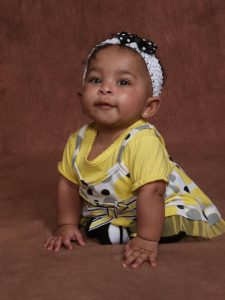What is Sacral Agenesis / Caudal Regression Syndrome?
 Sacral agenesis, lumbosacral agenesis, and caudal regression syndrome are three terms that are often used interchangeably. Sacral agenesis refers to a condition in which the sacrum (the lowest portion of the spine that forms the joint with the hips) fails to form (agenesis) during fetal development. Lumbosacral agenesis describes a more extensive form of this condition in which one or more of the lumbar vertebrae and perhaps some thoracic vertebrae may also be missing. Caudal regression syndrome refers to the same condition — the missing portions of the spine (the caudal regression) — and the syndrome of conditions that often accompany it. Click here for an introduction to the spine and spinal cord.
Sacral agenesis, lumbosacral agenesis, and caudal regression syndrome are three terms that are often used interchangeably. Sacral agenesis refers to a condition in which the sacrum (the lowest portion of the spine that forms the joint with the hips) fails to form (agenesis) during fetal development. Lumbosacral agenesis describes a more extensive form of this condition in which one or more of the lumbar vertebrae and perhaps some thoracic vertebrae may also be missing. Caudal regression syndrome refers to the same condition — the missing portions of the spine (the caudal regression) — and the syndrome of conditions that often accompany it. Click here for an introduction to the spine and spinal cord.
Causes
The exact causes of SA/CRS are unknown. It has been linked to improper expression of the HLBX9 gene, and because that gene is also expressed in the pancreas, links to maternal diabetes have been suggested, but studies have shown that only 15% to 20% of SA/CRS babies had diabetic mothers. Maternal diabetes may be an indirectly related factor, but other mechanisms such as umbilical ischemia (a blockage of the blood supply through the umbilical cord), hyperglycemia, infections, and exposure to toxins or retinoic acid are also suspected.
Effects
The effects of SA/CRS vary depending on the severity of the condition, and can include malformation of the lower limbs, kidneys and lower intestine, and varying levels of paralysis.
The lower extremities may be underdeveloped and the legs fused in a bent “Buddha” position, or sometimes a straight position. Webbing between the calves and thighs may be present. Paralysis (partial or full) may exist from the point where the spine ends.

In other cases, people may only have a small part of the lower spine missing and maybe no paralysis or orthopedic issues at all. However, for most there are some issues with bowel and bladder as well as some orthopedic issues.

Many people with SA/CRS have a missing kidney or horseshoe-shaped kidneys. Some have a few missing ribs or have an extra rib. It may seem like this can be a very big deal — and in some ways it is — but in other ways it’s not such a big deal at all.
Occurrence
SA/CRS is a rare condition: the rate of occurrence has been variously quoted between 1 in 25,000 to 1 in 60,000 live births. However, the source of these statistics is dated and possibly calculated based on a single population in a single location. Because of its rarity, most doctors have never seen a person who has this condition, and the information they know about it may be wrong or outdated. People who have SA/CRS may never have even met another person with this condition.
How can you learn more?
We have founded iSACRA to help people learn more about SA/CRS and to connect with others who have the same condition.
One of the best ways to learn about a condition is to have the opportunity to see and talk to the people who have it. This site is a place to learn about people all over the world who have SA/CRS or who are parents of children who have SA/CRS. It is intended for those with SA/CRS themselves, for their families and loved ones, for medical professionals looking to learn more about treatment of SA/CRS and its related conditions, and for anyone else who wants to know more about the condition.
Check back often because the site is updated frequently. Especially check out our various sections and join one of our Facebook groups. We have a group for individuals with SA/CRS and their immediate family members and we have another group for extended family, friends, teachers, and other supporters. On this site, you will have the opportunity to meet others and find out about what our lives are like. We aim to present a well rounded picture of SA/CRS, which is a tall order because no two people with SA/CRS are exactly alike. Stay tuned as we continue to build our organization and our website.
